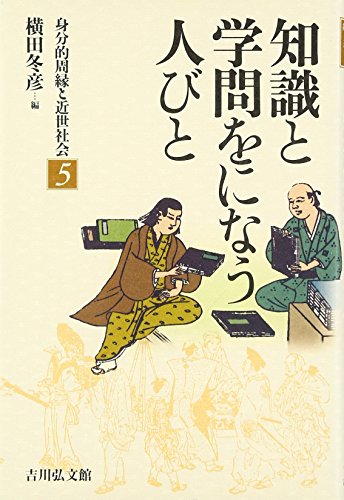2 0 0 0 長崎丸山遊郭の「遊女屋宿泊人帳」覚書 (特集 日本近世女性史)
- 著者
- 横田 冬彦
- 出版者
- 京都橘女子大学女性歴史文化研究所
- 雑誌
- 女性歴史文化研究所紀要 (ISSN:09193545)
- 巻号頁・発行日
- no.20, pp.65-91, 2012
1 0 0 0 IR 近世前期の出産 : 大和国無足人山本平左衛門日記を素材に
- 著者
- 横田 冬彦
- 出版者
- 史学研究会 (京都大学大学院文学研究科内)
- 雑誌
- 史林 = The Journal of history (ISSN:03869369)
- 巻号頁・発行日
- vol.103, no.2, pp.265-303, 2020-03
江戸時代の出産については、民俗学調査を援用したり、江戸後期の堕胎や間引きを禁止する人口政策史料から推定され、領主政策以前の平常産そのものを直接に明らかにすることはできていなかった。本研究は、一七世紀後半~一八世紀初めの大和国添上郡田原郷の藤堂藩無足人山本平左衛門の日記を素材に、近世前期の出産がさまざまな女性たちの協働によって行われていること、それにともなうさまざまな産育儀礼の存在を示した。また、その背景にはこの時期の高い妊産婦死亡率があることを述べ、あわせて大正期に行われた民俗学調査についても検証する。Research on childbirth in early modern Japan has so far relied on findings of early twentieth-century ethnographic surveys in addition to documents relating to late Tokugawa population policies outlawing abortions and infanticide. Direct accounts of regular childbirth preceding policy intervention by territorial lords have been difficult to come by. The present article analyzes cases of childbirth recorded between 1676 and 1720 in the diary of Yamamoto Heizaemon 山本平左衛門, a musokunin 無足人 (village elite retaining samurai status but no stipend) of Tōdō Domain, resident in Soekami County of Yamato Province. It demonstrates that childbirth in the early Tokugawa period depended on cooperation among women in various roles, and documents the performance of rituals relating to childbirth and child-raising. It also undertakes an estimate of the maternal mortality rate. Continuities with folk practices recorded in Taishō-era ethnographic surveys are reassessed on this basis.
1 0 0 0 『徒然草』は江戸文学か?--書物史における読者の立場
- 著者
- 横田 冬彦
- 出版者
- 校倉書房
- 雑誌
- 歴史評論 (ISSN:03868907)
- 巻号頁・発行日
- no.605, pp.2-18, 2000-09
1 0 0 0 知識と学問をになう人びと
1 0 0 0 歴史研究最前線(34)江戸時代民衆の読書
- 著者
- 横田 冬彦
- 出版者
- 歴史教育者協議会
- 雑誌
- 歴史地理教育 (ISSN:02881535)
- 巻号頁・発行日
- no.718, pp.76-81, 2007-08
